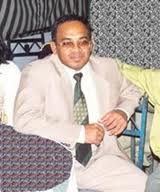According to the prevailing myths and legends, as recorded in the chronicles of ancient Sri Lanka and India, Sri Lanka was not an abode where human beings lived before the arrival of North Indian settlers around 500 BCE [1], represented by their leader Vijaya. The indigenous inhabitants of the island are described in the local chronicles variously as non-human yakkas, rakshasas, avaruddakas, pisaches (categories of demons according to the commentaries) and the nagas [2], a group that arrived later-described in terms of that confuse scholars even today and often translated as, ‘snakes, dragons or genii’.

Semi-demon Ghatotkacha standing on Karna's chariot during the Karna-Ghatotkacha war. Bali, Indonesia
Buddha settling a dispute between two Naga Kings: Sri Lanka's Kelaniya Raja Maha Vihara
The Yakkas [3] are often depicted in Sri Lankan temple paintings [4} as semi-naked, dark-complexioned, barbaric figures with prominent canine teeth protruding down at the angles of their mouths. The Buddha allegedly persuaded them to settle in another ‘island’ peacefully as they were wild uncivilized savages. According to the chronicle Dipavamsa, the island of Lanka at that time; ... had big forests and great horrors; different kinds of yakkas, greatly terrible, cruel, feeding on blood, furious and demons of various forms having different inclinations,…”
Some years later, according to the chronicles, on a subsequent visit to the island, the Buddha settled a dispute between two naga kings who were at war over a jeweled throne made of Lapis Lazuli, available and mined only at a particular location in the sub continent, identified today as region of Afghanistan. According to the archeologists, the mineral was exported along long-distance trade routes many millennia ago.
In their appearance and behavior the nagas appeared human, in comparison to the yakkas. They looked and behaved differently and belonged to a community who were more advanced culturally in behavior and life-styles. After listening to a sermon by the sage, they became converts to Buddhism.
Yakkas or raksasas [5] (demons) are mentioned in the ancient Sanskrit texts of India and in the Buddhist Jataka stories, as well as in the travel-accounts of various foreign visitors to the region. In his Records of Buddhist kingdoms the Chinese traveler-monk Fa-Hien, who visited the island during the early years of the 5th century CE, describes the prevailing opinion on the colonization of Sri Lanka and of its earliest as follows:
“The kingdom was originally uninhabited by man, but only demons and dragons dwelt in it. Merchants of different countries (however) came here to trade. At the time of trade the demons did not appear in person, but only exposed their valuable commodities with the value affixed. Then the merchantmen, according to the prices marked, purchased the goods and took them away. but in consequences of these visits (coming, going and stopping), men of other countries, hearing of the delightful character of the place, flocked there in great numbers and so a great kingdom was formed. The country enjoys an agreeable climate, without any differences in winter or summer. The plants and trees are always verdant. The fields are sown just according to men’s inclination; there are no fixed seasons.”The chronicles, around 4-6 centuries CE, seem to elaborate the same mythical themes, and duly recorded them. Not having any reliable sources f information other than these enigmatic legends on the shadowy proto-historic period nearly a thousand years before them, they seem to have contributed to the construction of a myth-ridden foundation to the early history of the island. There was no tradition of recording history before the arrival of Buddhism.
References in the chronicles and other texts regarding these strange beings of antiquity appear ambiguous as to whether they refer to human beings or non-human demons and genii. However, according to textual descriptions, these yakkas and nagas from the time of the Buddha did exhibit the emotions and complex social behavior of humans, possessing considerable linguistic abilities.
The nagas in particular, wore excellent clothing, could make many implements and adorned themselves with intricate jeweler. The existence of such fabulous legendary themes in the earliest periods of world history is not unique to Sri Lanka or India. Such legends are encountered in the early histories of other cultures and civilizations referring to the ancient world. Such material requires sensitive interpretation and reflection in order to render them meaningful and intelligible.
Our knowledge of the universe, the world in general and its past history, have increased immensely since the 18th and 19th centuries, along with advances made in scientific knowledge-particulary during the past few decades. Discoveries made in the fields of pre-historic archeology, paleontology, genetics and molecular biology including dating techniques like radio-carbon and thermoluminescence, progress of research in the fields of ancient geography and climatology that help us map the tectonic movements of land, monitor sea levels and study past climates reaching up to millions of years, have contributed to an enormous extension of our knowledge regarding the past. Such techniques enable us to reconstruct the early history of humankind, on a theoretically more realistic, factual and a believable framework.
Such data help to buildup an evidence-based pre-history of the island on solid and secure foundations than those inspired by myth and legend. Nevertheless, the picture emerging is far from complete and may need emendation or modifications in the due course, based on new discoveries. The account given in the chronicles about the yakkas of Sri Lanka may be skewed and exaggerated, but may not be false. We could indeed accept that ill-clad or naked dark-complexioned, hunter-gatherer communities that could be labeled as primitive or ‘savage’ lived in the caves and forests of the island before the arrival of migrants from Northern India bringing urban civilization and a new language.
The yakkas may have made definite genetic contribution to the Sinhalese and other communities living in the island. They probably survive culturally today as elements of the Veddha community, some of whom obtain a sense of identity, recognition and economic benefits by their claims to be the aborigines of Sri Lanka. Genetic and archeological information, as well as other scientific data available today provide further details on the so called yakkas, their origins, how they migrated, the routes taken, the approximate period of their arrival in the island, their possible lifestyles and even what they looked like. It appears that the new information could supplement the accounts in the chronicle enriching our understanding of this community as a foundational genetic component of the Sinhalese, and Sri Lanka people in general.
A cave in the Neader Valley, Germany
From the evidence available, it seems that the yakksa were indeed ‘Anatomically Modern Humans’ (AMH) belonging to the species of Homo Sapiens, in contrast to alternative human species that lived in ancient times such as Homo neanderthalensis that became extinct in Europe around 35,000 BCE. The fossil bones of this particular species were originally discovered at the Neander Valley, Germany in the 19th century. They seem to have coexisted for a while with modern humans living in caves, leading nomadic hunter-gatherer or scavenger life style that included, hunting, fishing and collecting edible plants and fruits in order to subsist. There is archeological evidence that these Neanderthals made fire and used assorted implements made of stones, bone or wood, the artifacts of which researched in detailed by archeological data to identify and study their culture and mode of life.
Above is a gleaning from the book titled “New Vistas On the Early History of Sri Lanka” written by Wijaya Dissanayake, 2012, Colombo. ISBN 978-955-665-164-5
Wijaya Dissanayake is neither a historian nor an archeologist. He is a Professor of Psychiatry at Faculty of Medicine, University of Colombo.
Footnotes by bunpeiris
[1] 500 BCE [1]
The arrival of Prince Vijaya and his 700 followers from Vanga (Modern Bengal) took place on the same day of the final extinction of Gautama Buddha in Kusinara or Kusinagar or Kusinara in the modern state of Uttar Pradesh, India: 543 BC
Following is an extraction from the fictional rendition of the Arrival of Prince Vijaya off "Divine Diary of God Vishnu" that would never be completed since bunpeiris is busy earning his bread without butter.
They close in & kneel at my feet at the beach of Lanka. “May you live long, my lord” the Prince greets me in Sinhala giving birth to the traditional Sri Lanka Holidays greeting of the nation “Ayubowan”. “May you live long too” And may your progeny live long too.” “My lord, what do you call this island?” ‘Prince, this is the land of Lanka, the resplendent island” The prince watches me intently. My answer addressing him with his rank ruffled him to an extent, yet not much. He is a fine specimen of a human being: dashing with a touch of arrogance. I read the mind of the prince: Oh! Lanka, a lovely little name! Of course it is a resplendent island; our palms are already copper colored. My lord, is this island inhabited? “There are no human beings here. Fear not, there will be no danger to you”[2] Naga
The prince watches me closely. He wonders if there aren’t humans, whether there could be non-humans. He also thinks of my blessings on his progeny, assurance. He has not even a faint shadow of a fear of any being. Right over his heart, he sports a huge solid mettle pendent, two human knuckles thick mini shield embossed with well sculpted majestic face of a great lion. The pendent is plated with Teflon providing it a kind of skidding surface: no great spear would pierce it. On his rippling arms and rounded wrists too are smaller versions of the same lion shield. His rear is unprotected: a sure sign he wouldn’t turn tail in the battle. Two crossed swords in leather sheaths hangs over his shoulders giving tell tale signs that he is ambidextrous.
It is interesting to note that Mahawamsa narrates four kings, who had the suffix naga to their name: Mahallaka Naga (135-141 AD) Cula Naga (193-195 AD), Kuda Naga (195-196 AD); Abhaya Naga (237-245 AD) Siri Naga (245-247 AD). All of them were from the early period of Anuradhapura
[3]Yakkas
Ancient Sinhalese chronicle “Rajavaliya” narrates that King Mahasena (276-302 AD) secured the services of Yakkas to have the vast Sri Lanka Holidays Minneriya irrigation reservoir constructed. Today Minneriya National Park located in Minneriya is a Sri Lanka Holidays attraction close to Polonnaruwa in the Cultural Triangle of Sri Lanka.
Quote
King Mahasen taking the services of Yakkas, constructed the Minneriya reservoir and dammed up the Karagamga chaneeling its water to Minneriya. Considering the sign indicated by gods, he constructed the Talavatuoua and bringing under cultivation twenty thousand paddy fields and caused to be constructed seventeen reservoirs, namely; Muvagamuva, Suralla, Didora, Mahaminiya, Kokkavava, Puskumbura, Ratalla, Mahaluvava, Suluguruva, Kalavna, Kimbulvana, Vattamodaragalla, Belipitiya Vadunnava, Siruvalaya, Rantisa and Minihiriya, taking the services of yakkas during the night and of men during the day time.Unquote Rajaavaliya Modern translation by A.V. Suraweera, Colombo, 2000 ISBN 955-599-210-X
[4]
Visit Sri Lanka's Kelaniya Raja Maha Vihara (Sinhala: Kelaniya or Kalaniya Royal Temple) at the city of Kelaniya close to Colombo.
[5] Raksasas
Mahabarata narrates of a semi-demonic [semi-raksasa] character called Ghatotkacha (Sanskrit: Bald Pot); son of Pandava warrior, the peerless Bhima and a she-demon called Hidimbi, the sister of demon Hidimba. Ghatotakacha, a character with loyalty being one of his paramount virtues, had given the word to his father that he would appear at a mere thought of him by Bhima. Ghatotkacha was duly summoned by Bhima to close ranks with Pandava in the epic battle of Kurukshetra. As it turned out, the turning point of the epic war, that ended with the Pandava victory, was a result of the life-sacrifice of Ghatotkacha. After all, semi-demonic Ghatotkacha was a lion-hearted man of bravery, bravery bordering madness as the Alexander the Great that was still to arrive in history: a demi demon
Ghatotkacha was blessed with the ultimate boon from Shri Krishna that nobody in all the worlds, with the exception of Sri Krishna could match his magical capabilities. The mighty armed, Ghatotkacha, whose battle prowess rising up with the sun down, slaughtering thousands in a single day wreaked havoc in the Kaurava army. Duryodhana, in his haste to have Ghatotkacha killed, persuaded great-hearted Karna to make use of his divine weapon granted by god Indra: Vasavi Shakti, which could be used only once in the lifetime of the beholder, had been kept in reserve by Karana to fight against Arjuna. The death of Ghatotkacha [ the semi demon transformed into demi-god, at least in the eyes of Pandavs] at the hands of Karna, brought a grin to the Pandava counselor Krishna: Karna no longer was in a possession of divine weapon to use in battle against Arjuna.
http://www.flickr.com/photos/a_s_h_pune/5082431907/
The day before Krishna had summoned Ghatotkacha and revealed the necessity of disarming Karna, who had just begun to take part in the battle, of the divine weapon Vasava Shakti. Ghatotkacha promised to battle with all his ferocity and might to provoke the Karna to use the divine weapon, knowing very well, the use of it could very well bring about his demise.
We are all pawns of the destiny.bunpeiris


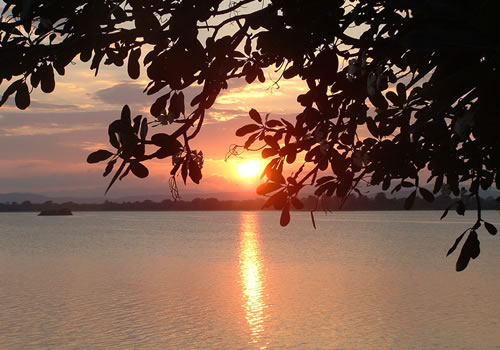
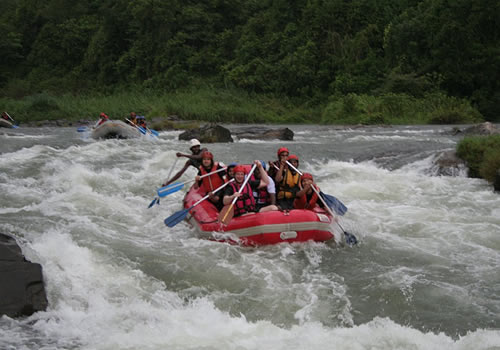
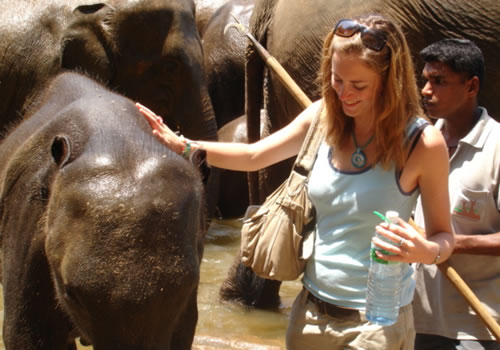
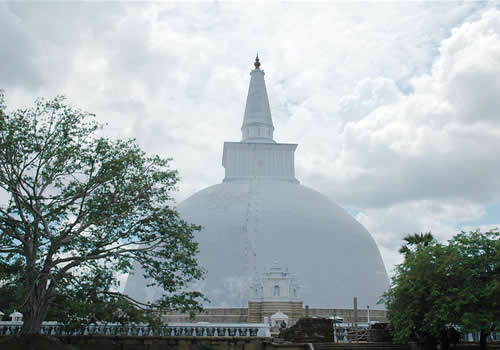
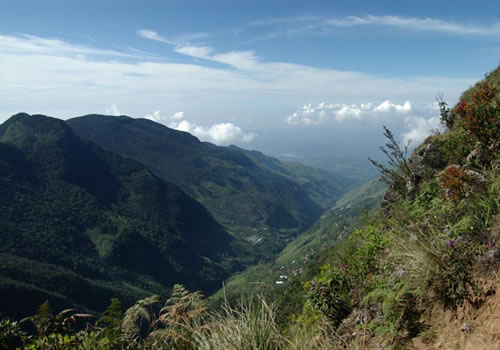



















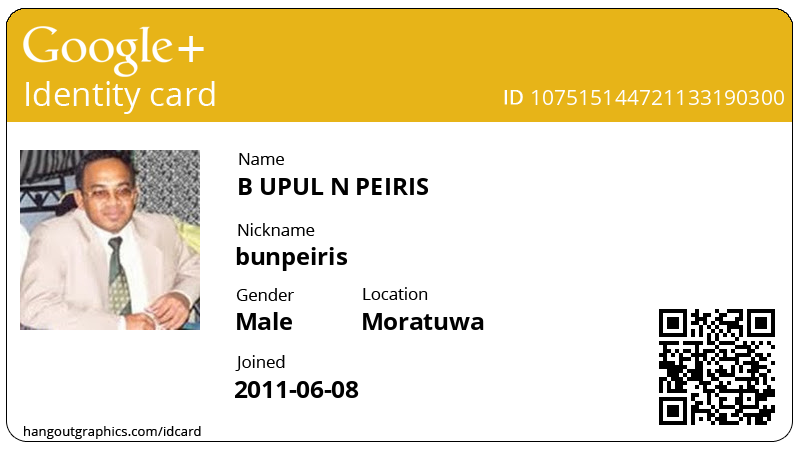









.jpg)






